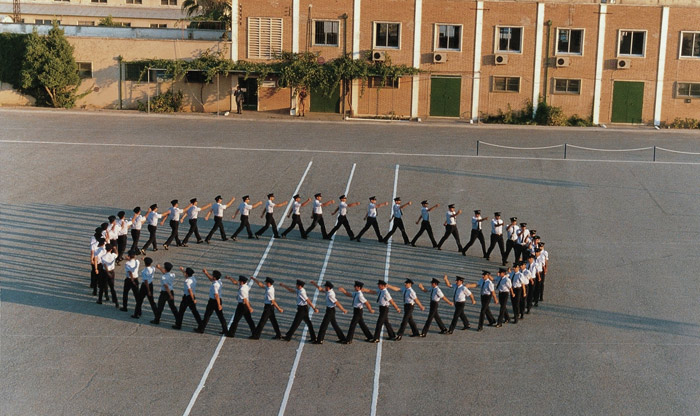At the Casino Luxembourg – Forum d’art contemporain, artist Christodoulos Panayiotou deciphers the history and sociology of contemporary society. This subtle and astonishing exhibition strikes a wonderful chord.
For over ten years, the Cypriot artist Panayiotou has delved into contemporary history through that of the island where he was born, to show the different layers of a society which is trying to find itself, becoming standardized and creating its very own myths. The Casino Luxembourg presents a selection of his works of art as well as interventions to the building itself. The exhibition presents a sensitive, intelligent, ironic view of our identities and our worlds, which sometimes don’t seem to be quite right.
Christodoulos Panayiotou has, over the past few years, made his place in the world of modern art thanks to particularly intelligent, simple, sensitive creations which are not without irony. They center on a universal subject; the construction of identity and history in our modern societies. Originally from Cyprus, a small island in the Mediterranean squeezed between Europe, the Middle East, and Africa, Christodoulos Panayiotou has always been interested in history and its construction, in the myths and references that societies create over the years. Particularly touched by a complex and fragmented history, he uses Cyprus as a reference point to show us the cultural processes that the whole of society go through.
As soon as you enter his exhibition, the tone is set, with no explanatory text, no titles on the walls. Works of art mix into the exhibition space and as an installed decor which becomes the work of art. The viewer starts with nothing more than the simple word, “And”. “The title of the exhibition was chosen especially to raise expectations. And sets the tone, as if there was always something left to write, define; history is not finished, everything is suspended”, explains the exhibition curator, Kevin Muhlen. During the preparations for his exhibition, Christodoulos Panayiotou delved into the venue’s history, and took inspiration from it. He made it his own, even taking away the white cubes, which were there for 20 years, so the appearance of the “Casino bourgeois” of past times shows through. In this room, which has become Baroque again for the occasion, three pairs of shoes are lined up in their original boxes. He is interested in the history of objects here, that of the shoes. They are former women’s handbags, which have become typically masculine accessories.
All the objects which shape our lives are close to Panayiotou’s heart. He reclaims them, and reactivates them to change the way we look at popular practices and beliefs. In this way, he has reclaimed the electricity poles from Independence Street in Limassol, placing them on a made-to-measure terracotta floor created from seawater, called The Sea. Referring to an historical anecdote from Cyprus, it reminds us of an image of the Mediterranean, the set of a terrible scene of daily shipwrecks, with only simple wooden logs afloat. As for the former ballroom on the first floor, it holds a mound of finely cut paper, which turns out to be the totality—or nearly—of Cypriot pounds which were destroyed following the appearance of the euro. The notes—which have now become scenery—take the form of vestiges from a past era, making way for standardization. For his research into the layers of culture and history, the artist is particularly attached to the media tool as a vector for these new myths, created by any document. In his trilogy, Wonder Land, Never Land, I Land, Panayiotou has rummaged around in the photographic and historical archives of his island to find out how a new identity comes to be built as influenced by European and American politics and popular culture. In this period of political, economic, and identity crises in Europe, the exhibition, And allows us to take a step backwards, to relearn how to look at history, and to attempt to better understand its mechanisms. Christodoulos Panayiotou surely had no doubt that his exhibition installation in the Grand Duchy would be exceptional. His questions truly resonate in this small country, a small island of sorts surrounded by bigger ones, where the layers of continuing history have been accumulating for a long time to blur its identity.
By Mylène Carrière
























